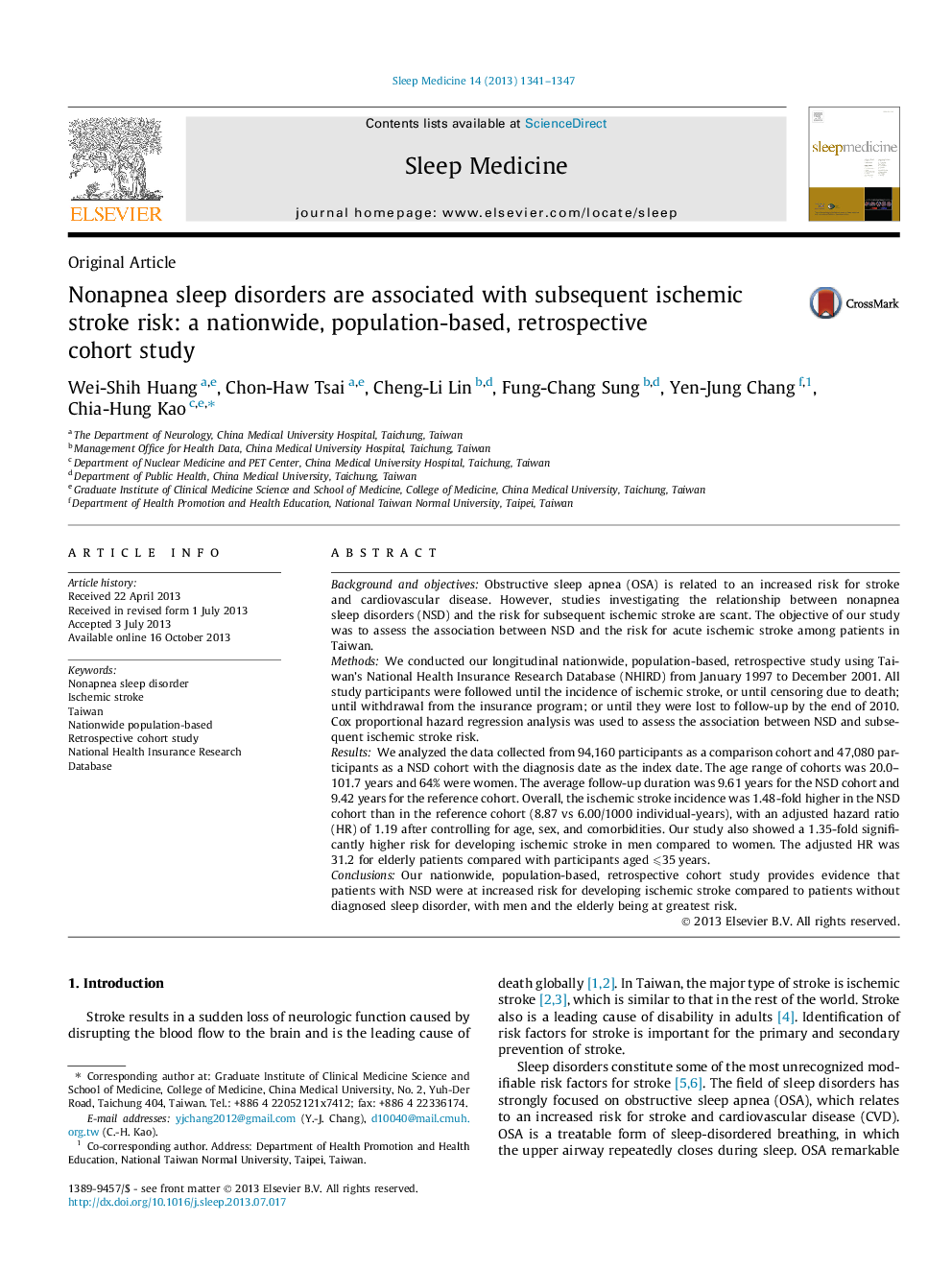| کد مقاله | کد نشریه | سال انتشار | مقاله انگلیسی | نسخه تمام متن |
|---|---|---|---|---|
| 6061036 | 1200253 | 2013 | 7 صفحه PDF | دانلود رایگان |
- The ischemic stroke incidence was 1.48-fold higher in the nonapnea sleep disorder.
- With an adjusted hazard ratio of 1.19 after controlling age, sex, and comorbidities.
- Men and the elderly population were at the greatest risk.
Background and objectivesObstructive sleep apnea (OSA) is related to an increased risk for stroke and cardiovascular disease. However, studies investigating the relationship between nonapnea sleep disorders (NSD) and the risk for subsequent ischemic stroke are scant. The objective of our study was to assess the association between NSD and the risk for acute ischemic stroke among patients in Taiwan.MethodsWe conducted our longitudinal nationwide, population-based, retrospective study using Taiwan's National Health Insurance Research Database (NHIRD) from January 1997 to December 2001. All study participants were followed until the incidence of ischemic stroke, or until censoring due to death; until withdrawal from the insurance program; or until they were lost to follow-up by the end of 2010. Cox proportional hazard regression analysis was used to assess the association between NSD and subsequent ischemic stroke risk.ResultsWe analyzed the data collected from 94,160 participants as a comparison cohort and 47,080 participants as a NSD cohort with the diagnosis date as the index date. The age range of cohorts was 20.0-101.7 years and 64% were women. The average follow-up duration was 9.61 years for the NSD cohort and 9.42 years for the reference cohort. Overall, the ischemic stroke incidence was 1.48-fold higher in the NSD cohort than in the reference cohort (8.87 vs 6.00/1000 individual-years), with an adjusted hazard ratio (HR) of 1.19 after controlling for age, sex, and comorbidities. Our study also showed a 1.35-fold significantly higher risk for developing ischemic stroke in men compared to women. The adjusted HR was 31.2 for elderly patients compared with participants aged ⩽35 years.ConclusionsOur nationwide, population-based, retrospective cohort study provides evidence that patients with NSD were at increased risk for developing ischemic stroke compared to patients without diagnosed sleep disorder, with men and the elderly being at greatest risk.
Journal: Sleep Medicine - Volume 14, Issue 12, December 2013, Pages 1341-1347
